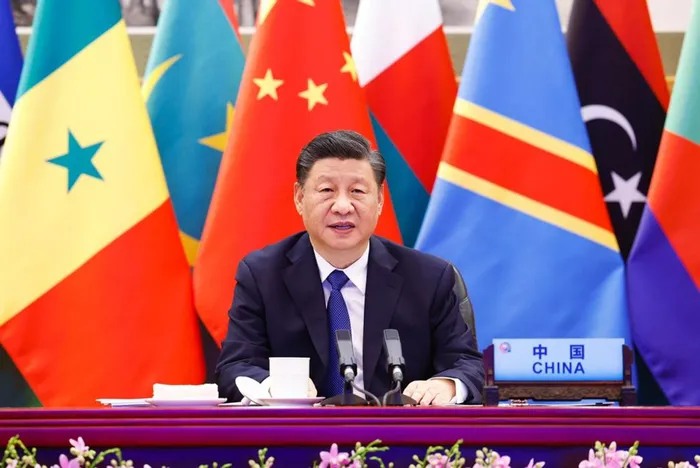China is still a developing country

Success stories on poverty alleviation in places such as Baisha can be found throughout China
Yi Fan
What do we talk about when we talk about China? Some might say it is the second-largest economy with tremendous political and economic sway. After decades of rapid economic growth, some people started to believe that China is more of a developed country than a developing country. For these people, here are some facts that might bring a new perspective.
Why is China a developing country?
Baisha is a small county in Hainan, a tropical island province of China. The county has rich and precious ecological resources. Yet its large areas of tropical forests and mountains also cut it off from the outside world.
Before 2020, it had long remained the only deeply impoverished county in the province. After years of relentless effort, a sustainable natural rubber industry was finally built up in Baisha, and the county successfully shook off poverty in 2020. Today, large forests that once locked the county have become a way out.
Success stories on poverty alleviation in places such as Baisha can be found throughout China. In 2021, China declared victory against extreme poverty, but that does not mean China has thus graduated from its developing country status.
In the case of Baisha, when it got rid of extreme poverty, its annual per capita disposable income was just 14, 009 yuan (2 037 dollars), only half of the national average and less than 1/3 of that of China’s more developed coastal provinces.
The developing country status of China is determined by its national conditions. China does have large metropolitans like Shanghai and Shenzhen, yet in the meantime, there are hundreds more smaller cities and counties in China’s less developed western regions.
In 2022, the per capita GDP of China was only 1/5 of the developed world and only 16.6% of the United States. China’s Human Development Index (HDI) was 0.768, ranking 79th in the world. When China’s HDI is inequality-adjusted, it falls to 0.651, which puts China right between Barbados and Mongolia in the world ranking.
The developing country status of China also has a sound factual and legal basis. It is widely recognised by international organisations, including the World Trade Organisation and the World Bank. In the World Bank, China is recognised as an upper-middle-income country together with countries like Brazil, Thailand, Libya, etc.
In the United Nations Development Programme, China is regarded as an active participant in south-south co-operation and an increasingly important partner for the rest of the developing world. In the World Economic Situation and Prospects, an annual report issued by United Nations Economic and Social Council, China has remained a developing country for decades.
China’s developing country status is also enshrined in many international treaties and conventions. For instance, the Montreal Protocol has specifically categorised China as a developing country, and specifically stipulated the rights and responsibilities of developing countries.
What has China done for other developing countries?
As the largest developing country with over 1.4 billion people, China knows all too well what development means, and therefore over the decades, apart from focusing on its own development, China has also lent a helping hand to other developing countries.
For instance, back in the 1960s, when China agreed to build a railway linking Tanzania and Zambia, China itself was a poor country and could hardly afford to build the railway. Yet China understood how significant this railway could be for Africa’s development and sent some 50 000 Chinese engineers and technicians to Africa.
They worked alongside the people of Africa, and built the TAZARA Railway despite formidable difficulties. many developing countries from Asia, Africa and Latin America rallied together and helped China restore its lawful seat at the United Nations in 1971.
Since then, Chinese leaders have repeatedly promised that every vote China casts in the United Nations belongs to the developing countries. And in the ensuing decades, China has lived up to this promise.
In recent years, China has also been sharing its experiences and good practices in poverty alleviation. As people in China often say, “It is more important to teach people how to fish than just giving them fish.” With this spirit, China has provided other developing countries with both much-needed assistance and the expertise for long-term growth.
Rubber tree cultivation technology mentioned earlier provided the answer to Baisha’s longstanding poverty issue. It has been proven effective in helping many other tropical regions in China to achieve rapid economic growth. On the basis of such experience, in 2006, China introduced its rubber tree cultivation expertise to Laos, a country that has long been wrestling with the problem of drug abuse.
Today, large farmlands that once grew poppies are now covered with rubber trees. Juncao, another effective mushroom-growing technique that has helped numerous Chinese counties step out of poverty, is now growing in many developing countries such as Thailand, Malaysia, and Fiji, helping them increase farmers’ income and creating social and environmental benefits.
As the first country to receive Juncao technology outside China, Papua New Guinea has introduced Juncao technology to 16 regions in eight of its provinces. Routine technical expertise guidance has been provided to more than 8,600 farmers in the country, benefiting more than 30,000 people.
China has now embarked on a path toward modernisation, and it will be the modernisation for more than 1.4 billion people.
This will take extraordinary effort, and in this process, China will continue to contribute its share to the development of other countries, especially developing ones, to leave no one behind.
Yi Fan is a Beijing-based observer of international affairs.
Related Topics: